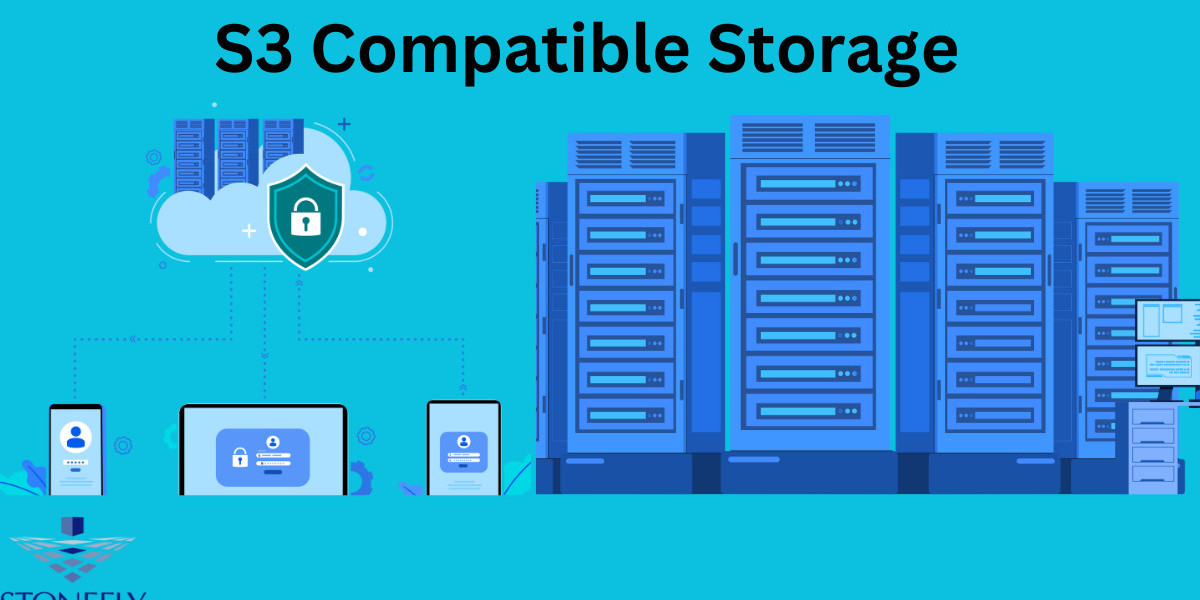Unlocking the Potential of S3 Compatible Storage
Understanding S3 Compatible Storage
The rapid expansion of big data and cloud computing has revolutionized how organizations think about data management. Central to this transformation is S3 Compatible Storage, a modern storage solution gaining momentum across industries for its flexibility, scalability, and cost-efficiency.
For those unfamiliar with S3 Compatible Storage, think of it as an approach that allows organizations to store, manage, and retrieve data seamlessly. This technology is built on well-established protocols and standards, offering a consistent experience when interacting with cloud-based storage solutions. But what sets it apart? Read on to discover why S3 Compatible Storage is a game-changer in the digital world.
What Is S3 Compatible Storage?
To grasp the concept fully, it’s vital to understand what "S3-compatible" means. At a high level, it refers to storage systems that adhere to the Simple Storage Service (S3) API, a widely accepted protocol for managing data in the cloud. These systems function similarly to traditional data storage but with enhanced accessibility and flexibility, making them ideal for modern IT infrastructures.
Traditional Storage vs. S3 Compatible Storage
- Traditional Storage typically involves hardware-heavy systems like Network Attached Storage (NAS) or external hard drives. While reliable in smaller setups, these systems can become increasingly complex and costly to scale as your data needs grow.
- S3 Compatible Storage, on the other hand, is a virtual environment. It allows data to be stored and accessed from anywhere via a simplistic, API-driven interface. The focus on accessibility, elasticity, and performance makes it suitable for applications ranging from app hosting to large-scale data analytics.
Key Features of S3 Compatible Storage
Scalability
S3-compatible systems dynamically scale with your organization’s data demands. Whether you need to store a gigabyte or several petabytes of information, these systems adjust effortlessly without having to provision additional hardware.
High Durability and Reliability
Data redundancy techniques ensure reliable long-term storage by distributing data across multiple locations. The chances of data loss are minimized, making it a dependable solution.
Interoperability with Platforms
Designed to integrate seamlessly with numerous platforms like data pipelines, content delivery networks (CDNs), and backup software, S3 Compatible Storage simplifies workflows.
Cost Optimization
By eliminating the need for expensive on-premises hardware and incorporating tiered storage options, S3 Compatible Storage significantly reduces storage expenses.
Security
Advanced features like object-level encryption and robust access management frameworks provide a secure environment for sensitive data.
Use Cases and Benefits of S3 Compatible Storage
Industries Benefiting from S3 Compatible Storage
Media & Entertainment
From streaming platforms to digital content creation, S3 Compatible Storage allows companies to store and retrieve vast libraries of high-definition files with minimal latency.
Healthcare
Healthcare providers manage large volumes of critical data, including patient records and imaging scans. S3 Compatible Storage ensures secure, scalable, and HIPAA-compliant environments.
E-commerce
Retail platforms experiencing fluctuating traffic spikes leverage S3-compatible systems to efficiently handle product catalogs, customer data, and transaction histories.
Data-Driven Startups
Startups working with big data or machine learning require scalable storage solutions. S3 Compatible Storage provides the infrastructure they need without heavy upfront costs.
Benefits
- Scalability scales storage needs dynamically.
- Reliability reduces downtime with advanced replication.
- Cost-efficient tiers optimize long-term data costs.
- Ease of integration simplifies workflows across software ecosystems.
Real-world examples like storing backups for educational institutions or handling large datasets for financial analytics further illustrate its versatility.
Implementation and Best Practices
Once you’ve decided to adopt S3 Compatible Storage, integration becomes the next step. Here’s how to do it efficiently:
How to Integrate S3 Compatible Storage
Select Your Provider
Choose a provider that aligns with your business needs. Evaluate options based on scalability, pricing, and user reviews.
Choose Appropriate Storage Tiers
Many systems provide tiered storage for frequently accessed (hot storage) and less-accessed (cold storage) data. Ensure you assign data to appropriate tiers for cost efficiency.
Migrate Your Data
Use robust migration tools to transfer existing data seamlessly into the new storage system. Always verify data integrity post-transfer.
Set Up Access Permissions
Configure role-based access control (RBAC) policies to ensure that sensitive data remains secure.
Integrate with Applications
Leverage pre-built APIs or SDKs (Software Development Kits) to integrate the system into your existing applications.
Best Practices
Use Versioning
Protect your data from accidental deletions or overwrites by enabling versioning.
Monitor and Audit Regularly
Utilize monitoring tools to keep an eye on storage usage and performance metrics.
Enable Encryption
Both data-at-rest and data-in-transit should be encrypted to prevent unauthorized access.
Optimize for Performance
Conduct regular performance testing to ensure storage processes run efficiently under load.
By adhering to these best practices, organizations can ensure secure, seamless, and highly efficient implementation of S3 Compatible Storage.
Leading S3 Compatible Storage Providers
Not all S3 Compatible Storage providers are created equal. Here’s a quick snapshot of notable options:
Wasabi
Known for its simple pricing model and no egress fees. It offers fast performance for content delivery and backups.
Backblaze B2
Affordability is the main highlight, especially for startups or small businesses without enormous budgets. Ideal for storing large datasets.
Scality RING
This platform excels in enterprise-grade storage needs, offering capabilities like geo-redundancy for highly distributed data management.
Why S3 Compatible Storage Is Crucial for Modern Enterprises
S3 Compatible Storage is no longer a “nice-to-have” but a fundamental component for forward-thinking organizations. Its versatility, reliability, and cost-saving benefits make it integral to efficient data strategies.
By adopting the best practices discussed above and selecting a trusted provider, businesses can unlock immense potential, staying ahead in a competitive digital landscape.
Are you ready to revolutionize your data storage? Explore leading providers or integrate S3 Compatible Storage into your IT infrastructure today!
FAQs
1. What does S3 compatibility mean?
S3 compatibility refers to storage systems that support the S3 API, enabling seamless integration with various platforms and tools to manage data efficiently.
2. Can S3 Compatible Storage be used on-premises?
Yes, certain providers allow on-premises deployments using S3-compatible software-defined storage solutions.
3. How secure is S3 Compatible Storage?
Highly secure. It incorporates advanced security layers such as encryption, multi-factor authentication (MFA), and role-based permissions.
4. Is S3 Compatible Storage cost-effective?
Absolutely! Tiered pricing, lack of hardware dependencies, and optimization opportunities make it highly cost-efficient.
5. How do I migrate my current data to S3 Compatible Storage?
You can use migration tools offered by many providers, ensuring data is transferred securely and remains intact during the process.








